This guide to Giudecca is based on several visits. It’s important to check hospitality opening times because Giudecca is a tiny, mainly residential island and nowhere near as touristy as other parts of Venice. Places can suddenly close too. And a tiny ask: when you visit Venice, please try to avoid using AirBnB because it is destroying the city’s private rental market. Far better to check into a locally-owned hotel or BnB.
Early evening on Giudecca is the golden hour, a time to stroll along the fondamente, drink an Aperol and listen to the ringing of church bells. The coastguard moors at Palanca, and the men pop in for a coffee and a chat. As the light plays across the Venetian waterfront, colours grow richer and sound travels further. Amid the chatter of the locals, we think we can hear the crowds across the water at Zattere.
Once filled with large palazzos with extensive and lush gardens, traces of the recent industrial past of this long, low island can still be seen in the hulkingly large and redeveloped Molino Stucky flour mill, now a Hilton hotel next to the Fortuny showroom. Jacopo de’ Barbari’s famous map of Venice shows Giudecca’s geography, a string of eight small and green islets formerly known as Spinalonga (It was once called ‘Long Thorn’ although it looks more like a fish bone to me), where seven monasteries were established, and wealthy families built palazzos surrounded by lavish gardens. After the fall of the Republic of La Serenissima, many of these buildings were converted into industrial, commercial and civic buildings and housing for workers. The island’s industrial productivity declined after the Second World War, and now Giudecca is mainly residential once again.
Make time to explore its backstreets despite it being hard to tear oneself away from the lively fondamente that runs the length of the Giudecca Canal. We wandered around a deconsecrated female monastery (SS Cosma e Damiano now known as Artisti Artigiani del Chiostro), the location of a cat sanctuary and home to artists and craftspeople who work from studios in the cloisters. You’ll get to meet bookbinders, perfumiers, sculptors, herbalists, glassblowers, graphic designers and mask-makers. There are so many different scents and sounds; as with all cloistered spaces, you move between dizzyingly bright light and cool shadows. Hot metal, sand and ink, turps, wood glue, sage, and freshly-sawn timber mingle with the scent of the nearby lagoon.



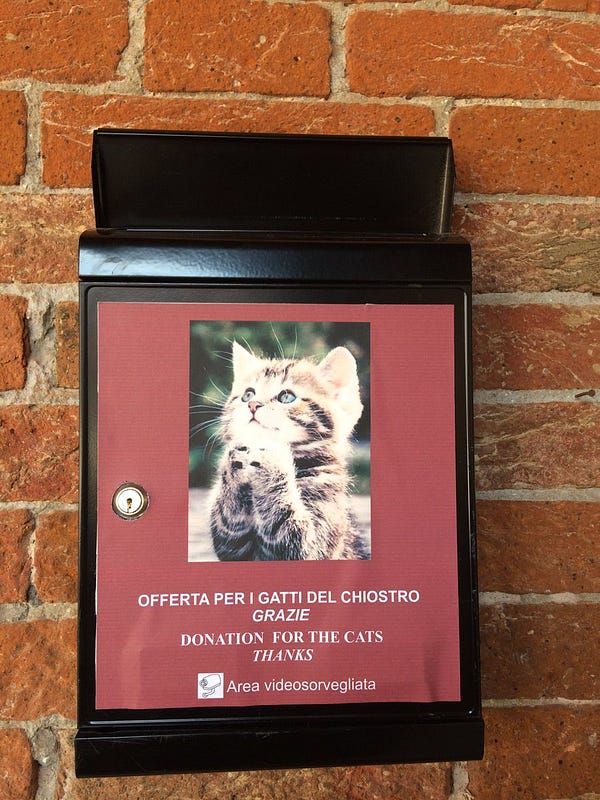

Casa de Trei Oci (House of Three Eyes) has three dramatic windows overlooking the San Marco basin at the western end of Giudecca, close to the island of San Giorgio (Zitelle stop on the Vaporetto). Originally designed by the artist Mario De Maria (Marius Pictor) and first built in 1913, it reopened in 2012 after extensive renovations and is home to permanent and temporary exhibitions. In April ‘22, John Pawson guest-curated an installation, and the venue has also hosted photographic exhibitions by Helmut Newton, David Lachapelle, and Letizia Battaglia.
The side of the island facing the lagoon is quiet and residential; apartment blocks arranged around campos (squares), allotments filled with zucchini and tomato plants and tiny row houses predominate. To the west, the lagoon is busy with water taxis and launches carrying people to and from the Hotel Cipriani. In the early morning, the lagoon twinkles as if made from millions of tiny diamonds. You will need sunglasses.
The women's prison, Casa di Reclusione Femminile is still there. (Giudecca 712). Housed in a former convent, the building is old and tired & dates back to 1500, but has a decent-sized vegetable garden of six thousand square meters that the women cultivate organically. They call it the Orto Delle Meraviglie – ‘Garden of Marvels’. The crops are sold from a stall outside its main doors on Thursday mornings (9-12), and several times a year, the prison holds an open day where you can visit its market gardens. They also grow herbs and other plants that are used in their toiletry range- Veneziana Coloniali e Spezie- stocked by quite a few local hotels.
We went along to meet the women who work the gardens (the staff and many of the women speak excellent English). They gave me permission to take photographs. I went away with a little bag of bay leaves that got confiscated at customs.
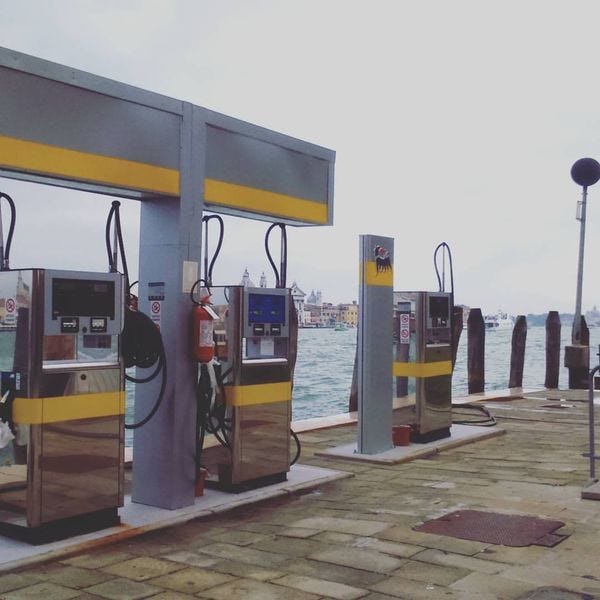
I adored Giovanni Toffolo, the island’s boatyard, where we saw wooden-hulled boats being restored in a building filled with the sound of workmen singing along to many stations on many radios. The workmen eat at a nearby lunchtime mensa- a canteen which is also used by local university students and operates in tandem as an art exhibition space (The Food & Art Canteen, Fondamenta Berlomoni 554). The public is welcome: take the Vaporetto to Palanca, and it’s a short walk to the boatyard along the canal with splendiferous views of Venice to your left. Food & Art’s bar counter is lined with platters of tramezzini (little sandwiches made with soft, crustless bread). This is the bread that is advertised on gondola displays in stores as ‘being perfect for Nutella sandwiches’. There are a few seats outside on the campo. It is a deeply local place to eat; the owner seemed surprised to see us. The menu is not frilly; this is well-priced food for busy, working people, but it is staying, good and properly local.
The Giudecca fondamente is lined with bars, restaurants and bakeries, many of which have a long narrow counter parallel to the till where one can take morning coffee and eat pastries. Remain standing if you are only popping in for an expresso. Some drinks to look out for: the Mezzo e Mezzo (made with soda water, Nardini Rosso, a bitter liqueur and Nardini Rabarbaro, a liqueur flavoured with Chinese rhubarb); the Sgroppino (lemon sorbet or gelato, vodka, and Prosecco); and Spritz al Bitter (Campari, Prosecco and soda water). Quite a few bars will mix these for you. La Palanca, close to the Ponte Piccolo, is a good lunchtime bet, and the canalside tables offer great views and the chance to have your feet washed during acqua alta (high water at particular times of the year). Tagliolini ai calamaretti (pasta with tiny calamari), tuna with grapefruit, and swordfish carpaccio with orange zest were invigorating. Staff provided us with blocks upon which to rest our feet because packing heavy wellies when you’re flying budget with its pathetically tiny luggage limits is out of the question. I wonder if a rental store for acqua alta gear exists anywhere in Venice.
L’Isola Del Gelati (Fondamenta Croce 199, Giudecca) is highly regarded by locals and tourists alike (these do not always align). Order a cup of the incredible vanilla gelato and keep an eye out for albicocca (apricot) when it is in season. HINT: when you head back to Zattere on the Vaporetto, there’s a much-loved gelato store called Gelateria Nico, almost directly opposite La Palanca on the other side of the Giudecca Canal (Fondamenta Zattere al Ponte Longo, 922 Venice). This is where you will find amazing liquorice gelato; it’s also a good location to watch the sun set on Giudecca.
Trattoria & Pizzeria Do Mori on Giudecca’s waterfront sent out a huge portion of crab gnocchetti, which would be filling enough for two if you ordered a tomato salad and bread to accompany it. In the evening, try to get one of the indoor tables next to the window with views over the canal. The gorgonzola pizza is very good, and they do takeaway.
After visiting Chiesa del Santissimo Redentore, we had lunch at Al Pontil Dea Giudecca (Via Giudecca, 197/a), next door. They are open for Cicchetti all day. Their lunch menu is very simple; you are seated, and the owner will tell you what is available based on what was bought at the market earlier that day. Sometimes there’s a hand-written list of dishes, but not always. The food is traditionally and fiercely Venetian, the staff and owner are great, and I adore it.
Panificio Crosara (Fondamenta Sant’Eufemia 655) sells excellent bread, grissini and pasticciera. They also sell panini, focaccia and ciabatta to be cut and stuffed with whatever filling you like. (Try walnut and gorgonzola or ham and asiago). There are tall bags of bussola for sale (the hard biscuits Venetians like to dip into coffee and liqueurs), zaleti made from polenta and raisins, baci in gondola (sandwiched with dark chocolate) and focaccina Veneziana (a brioche-like bread studded with almonds and pearlised sugar). If you are there during Carnevale, you might find frittele.
My favourite Venetian fishmonger is on the fondamente too. Despite the restless crowd of customers around us, the counter staff are patient as, in halting Italian, we choose our fish. For a few euros, we bought flats of butterflied sardine and anchovy (about twelve of each) to melt in a hot pan to be spread on bread and spooned over pasta. One visit in autumn meant that mantis shrimp were in season and twelve of those fed the pair of us with a tomato salad and olive oil.
If your trip coincides with autumn and you have somewhere to cook, mushrooms are sold in the shops that line the fondamente. (Or you could attempt to bring some back with you.) There is a Friday market on Sacca Fisola, the most easterly and residential of the Giudecca islands. It’s a mixed market with stalls selling household stuff too. The mushrooms we bought were stellar; apricot chanterelles, the deep orange-capped amanita Caesarea (‘Caesar’s mushroom’), Chiodini, fat little porcini, and deeply grooved ceps were just arriving, and locals were visibly excited to see them. A customer at Ortofrutta Vianello suggested I eat them in a simple risotto to herald the autumn; That is what I do every year, he said. I ate tiny squares of fried polenta topped with mushrooms at a Baccari and stuffed every nook and cranny of my suitcase with the little beauties.
Venetians know their fungi: In the late 1800s, entire families from the lagoon travelled to France to learn how to cultivate mushrooms, working in fungi farms inside the chalk caves around Paris. Eventually, they returned and set up business in the Veneto and Trentino-Alto Adige. When we took a train ride to nearby Bassano Di Grappa in the foothills of the Dolomites, there was an entire store devoted to mushrooms. I learned about mushroom-stuffed strudel there.
For a great view over the lagoon, the Sky Bar at the Stucky Hilton is a good place to base yourself as night falls. Above you are the lights of planes landing at Marco Polo, to the right is San Marco, and beyond that, Castello. Left is Sacca Fisola, the last little island of Giudecca and the large yachts moored at the Port of Venice. If you go during the day, you will be able to look into the Fortuny Garden which is closed to visitors. The drinks are expensive; I’d recommend just the one in fair exchange for that view before retiring to one of the lagoon-side bars- Do Mori serves a bloody good Aperol, Puccini (tangerine juice and prosecco) and Negroni. The Hilton has its own water taxi, and you can use it free of charge to hop across to Zattere and San Marco. (We used it even though we weren’t staying there!)
The small island of San Giorgio Maggiore, located in front of St Mark’s basin and a short Vaporetto trip from Giudecca, was named for the church of San Giorgio that crowns this relatively green part of the city. The view below is from its campanile and is one of the best ways to witness how Venice fits together. There’s a lift for tired legs. The Hotel Cipriani is opposite, separated by the Canale Delle Grazie. Get to Giorgio Maggiore via the water bus line 2 from Giudecca and Venice.
If you are feeling extravagant, Cip’s Club at the Hotel Cipriani (Fondamenta de le Zitelle 10, Giudecca) operates a private, complimentary launch from San Marco for its customers. The restaurant is expensive, but the views are amazing. If you want to go to the hotel to enjoy a drink in its gardens or eat pizza by the pool at Bar Gabbiano, you can use the launch for that too.

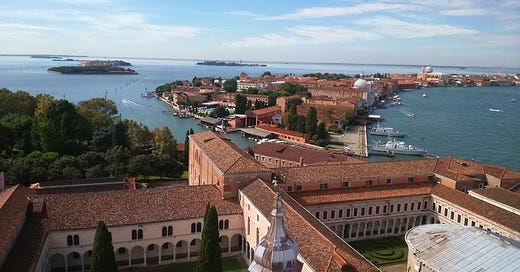



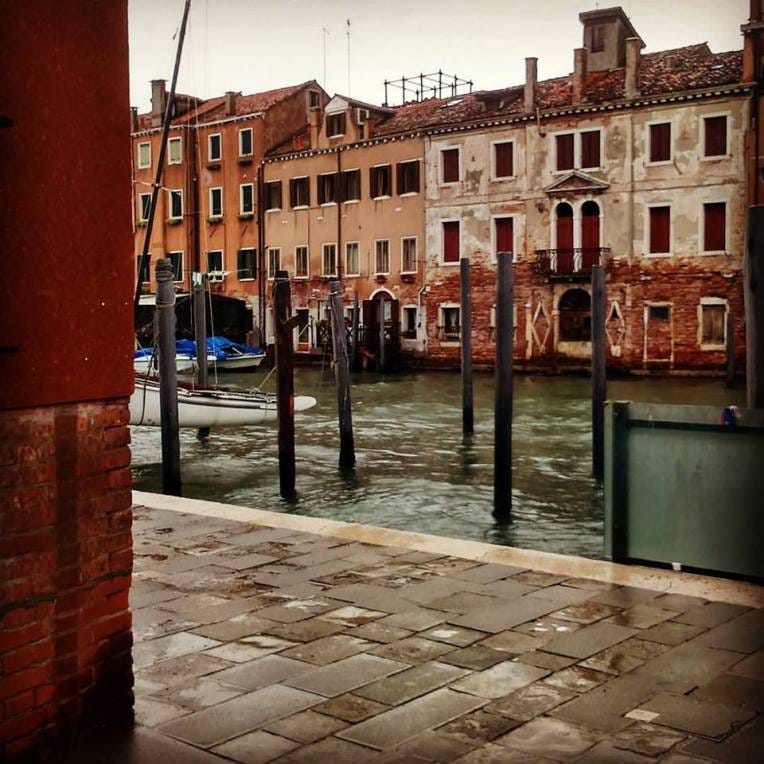
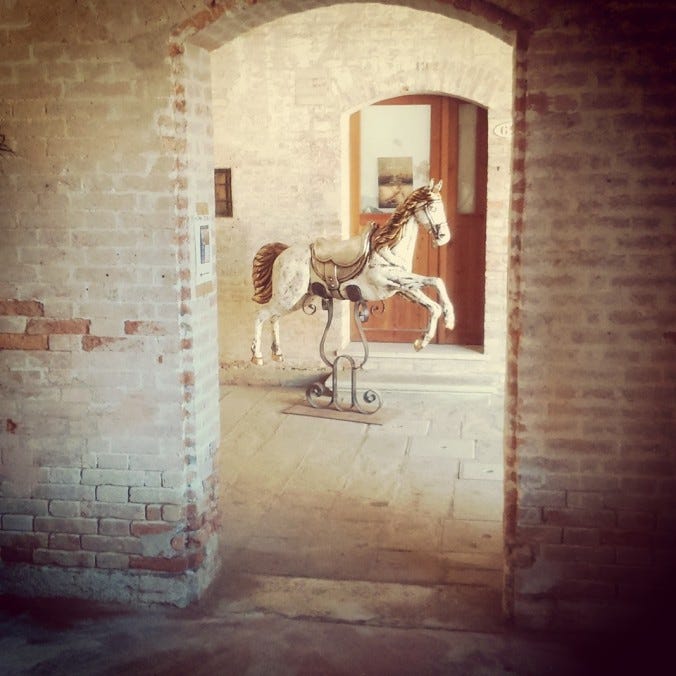
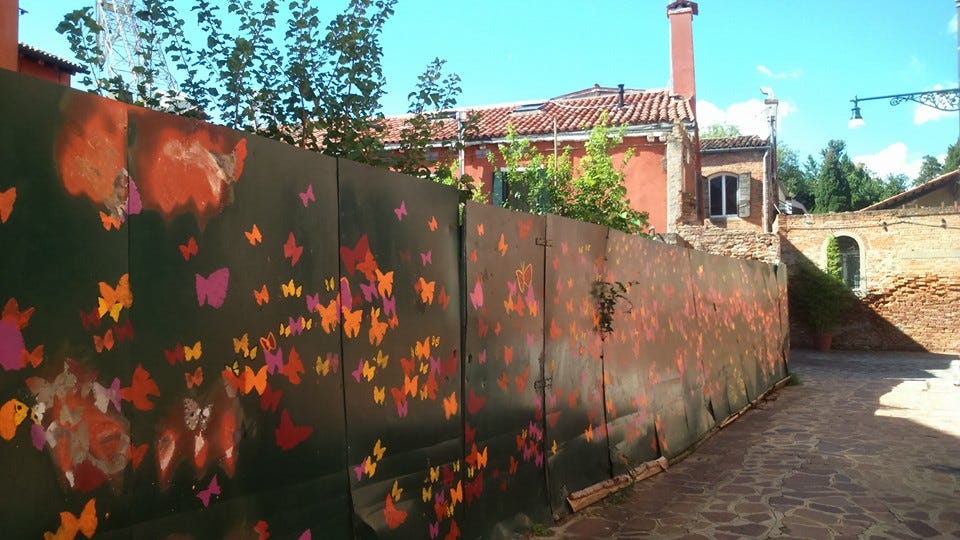
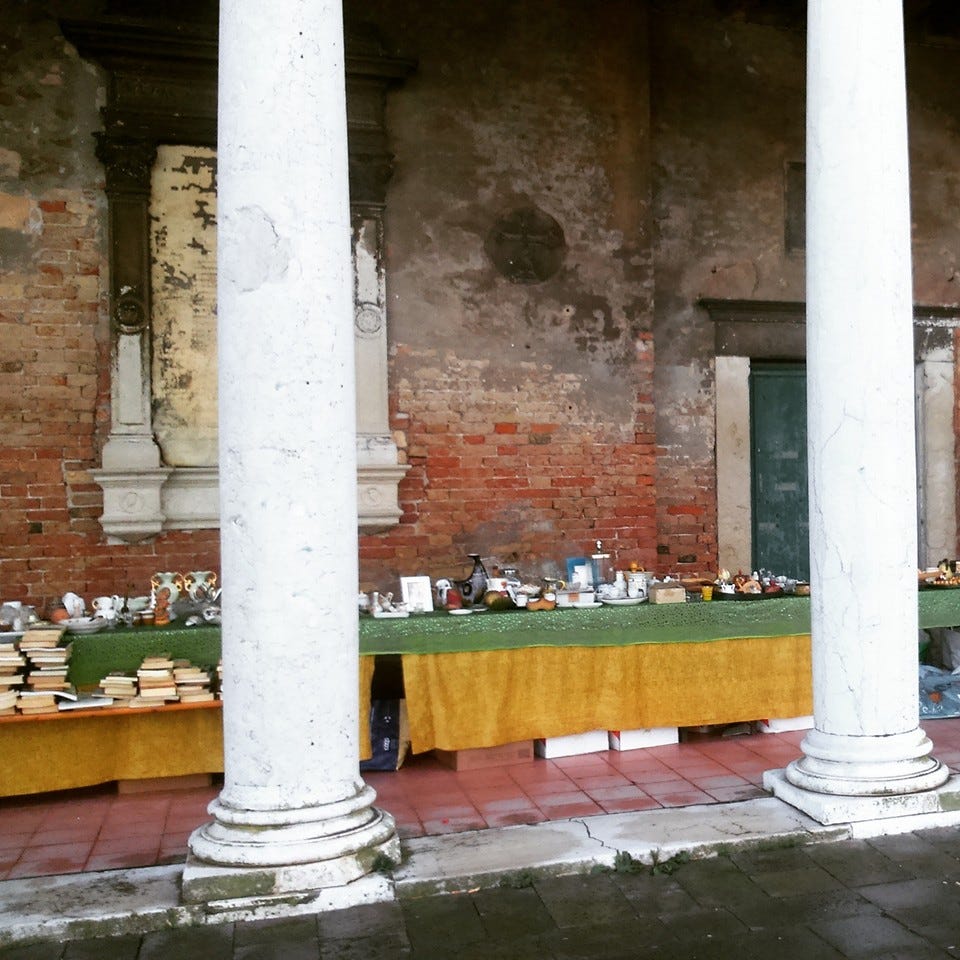
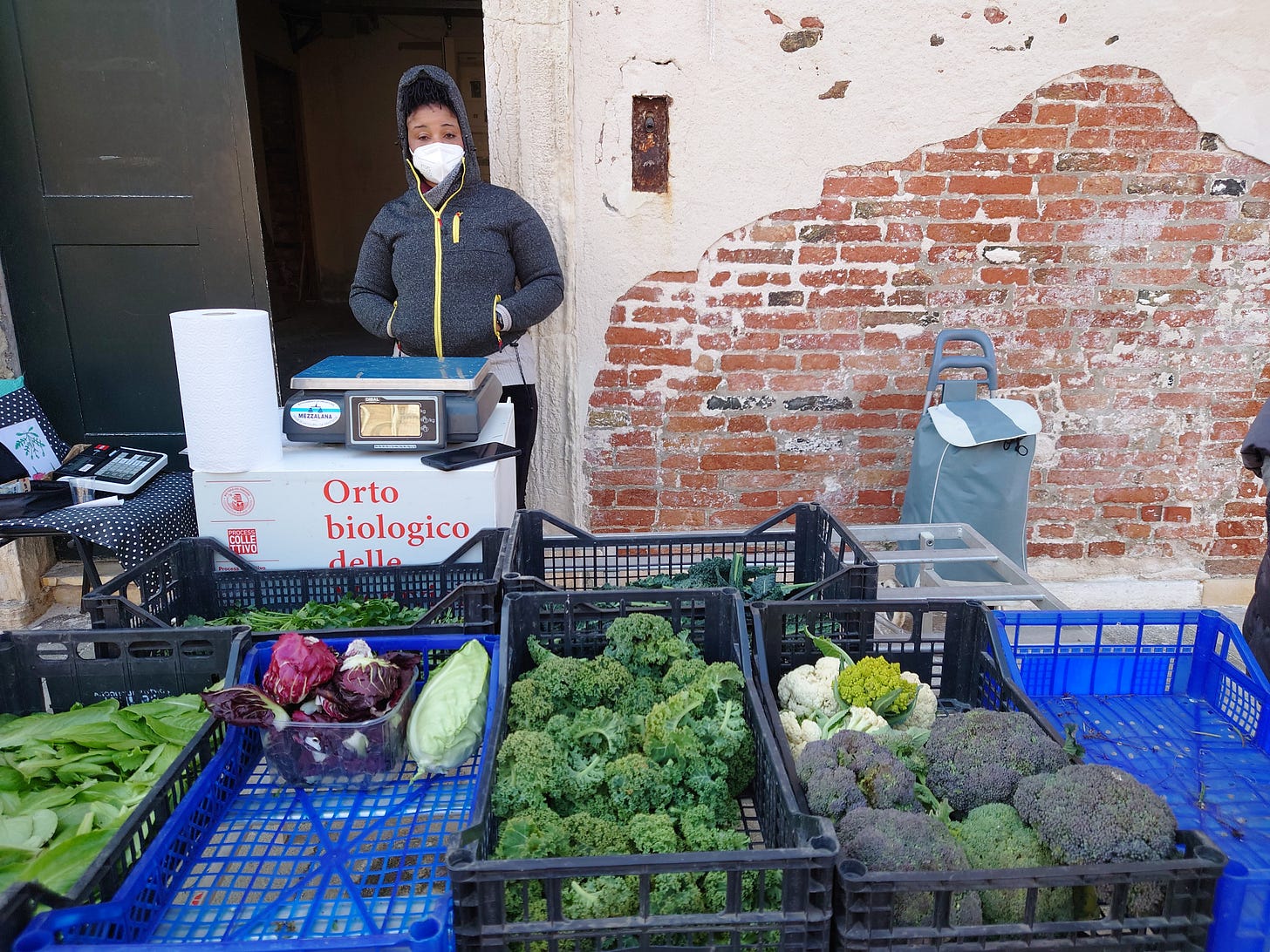
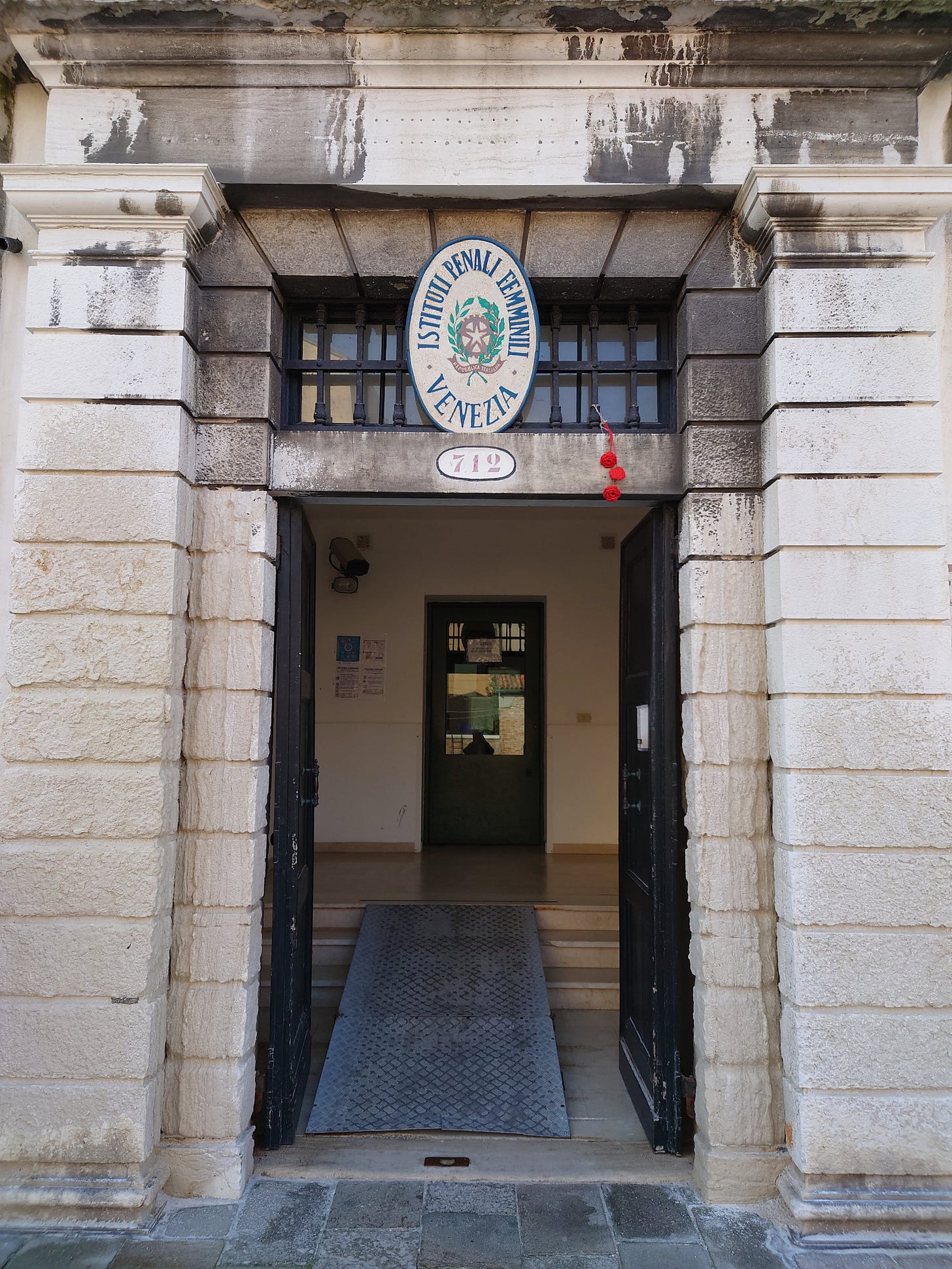
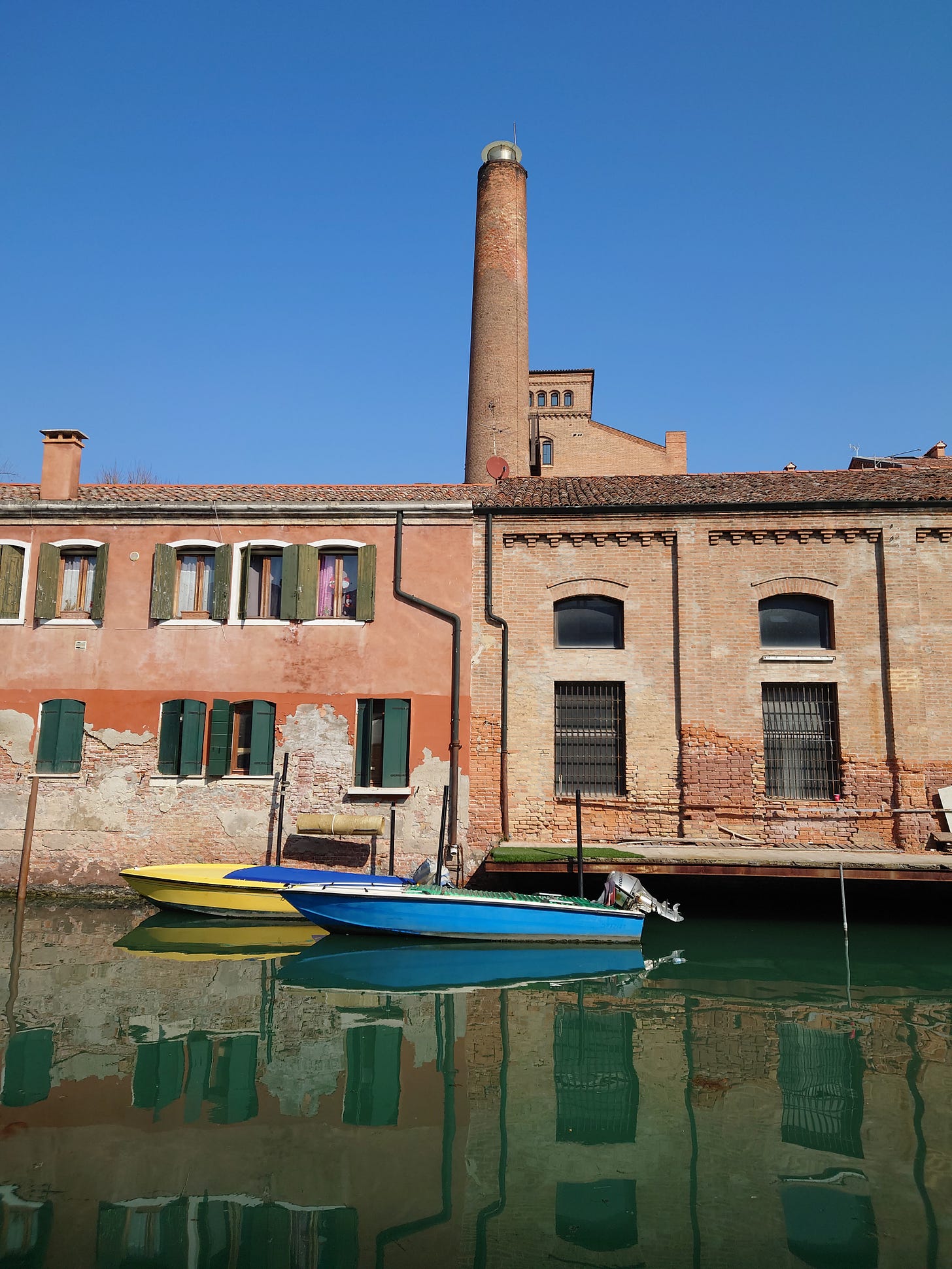
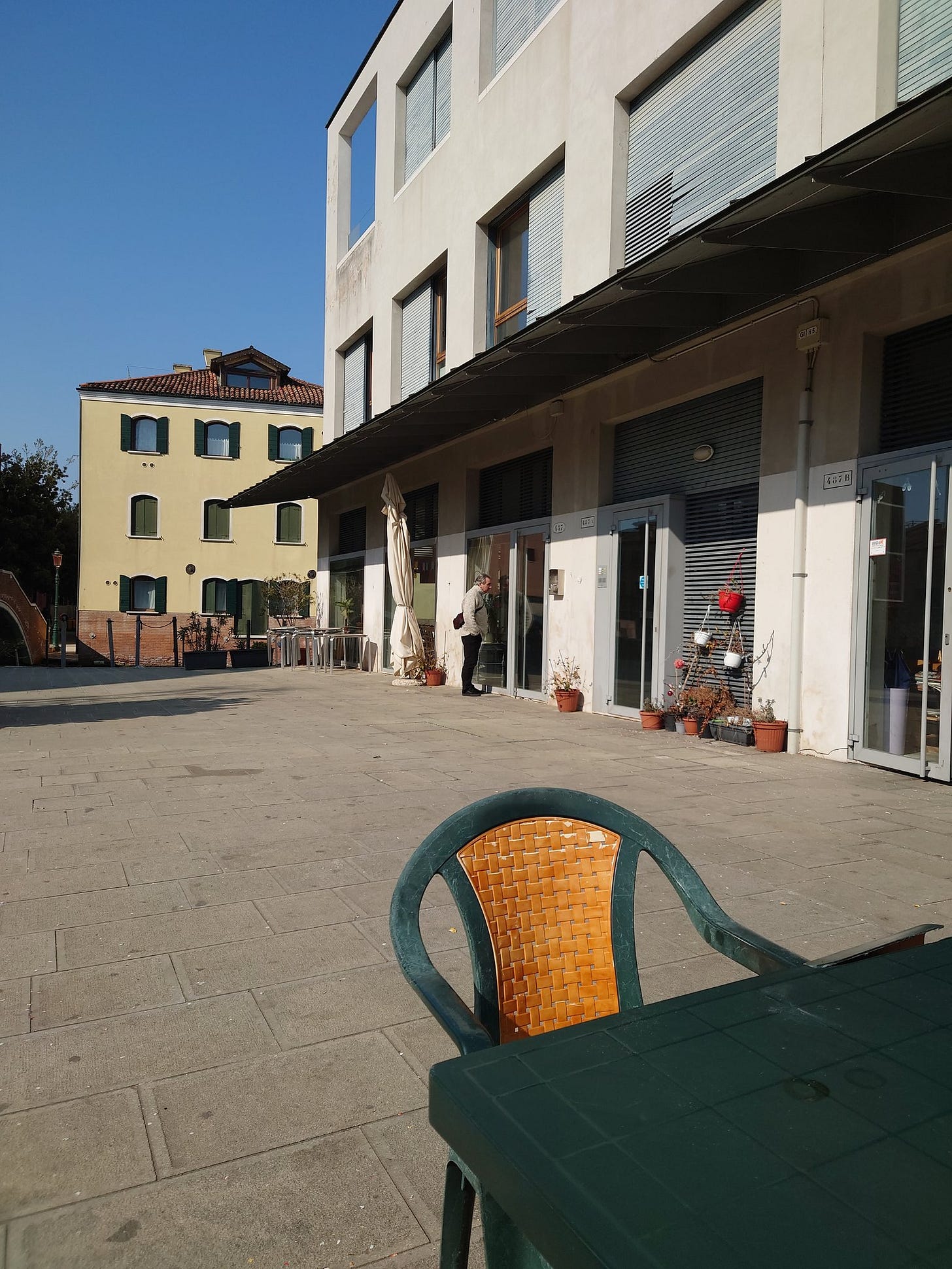
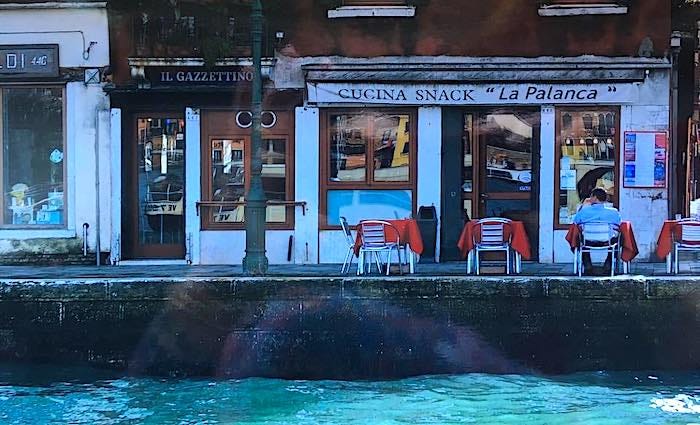
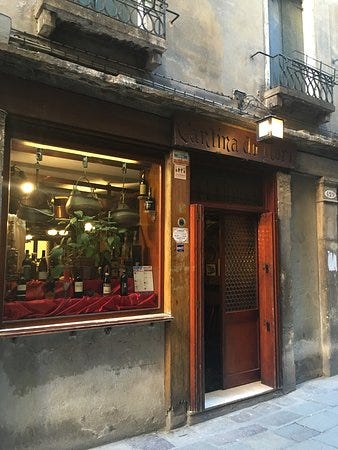
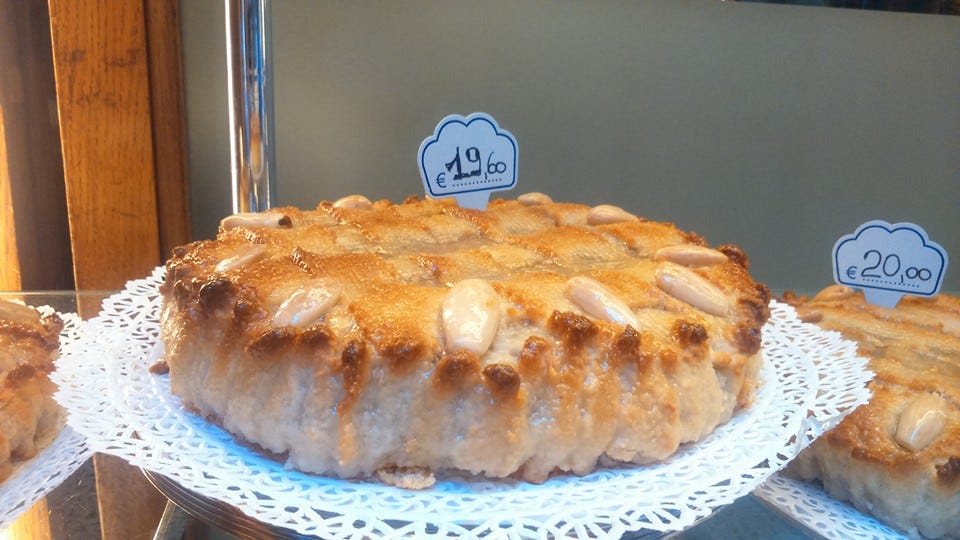

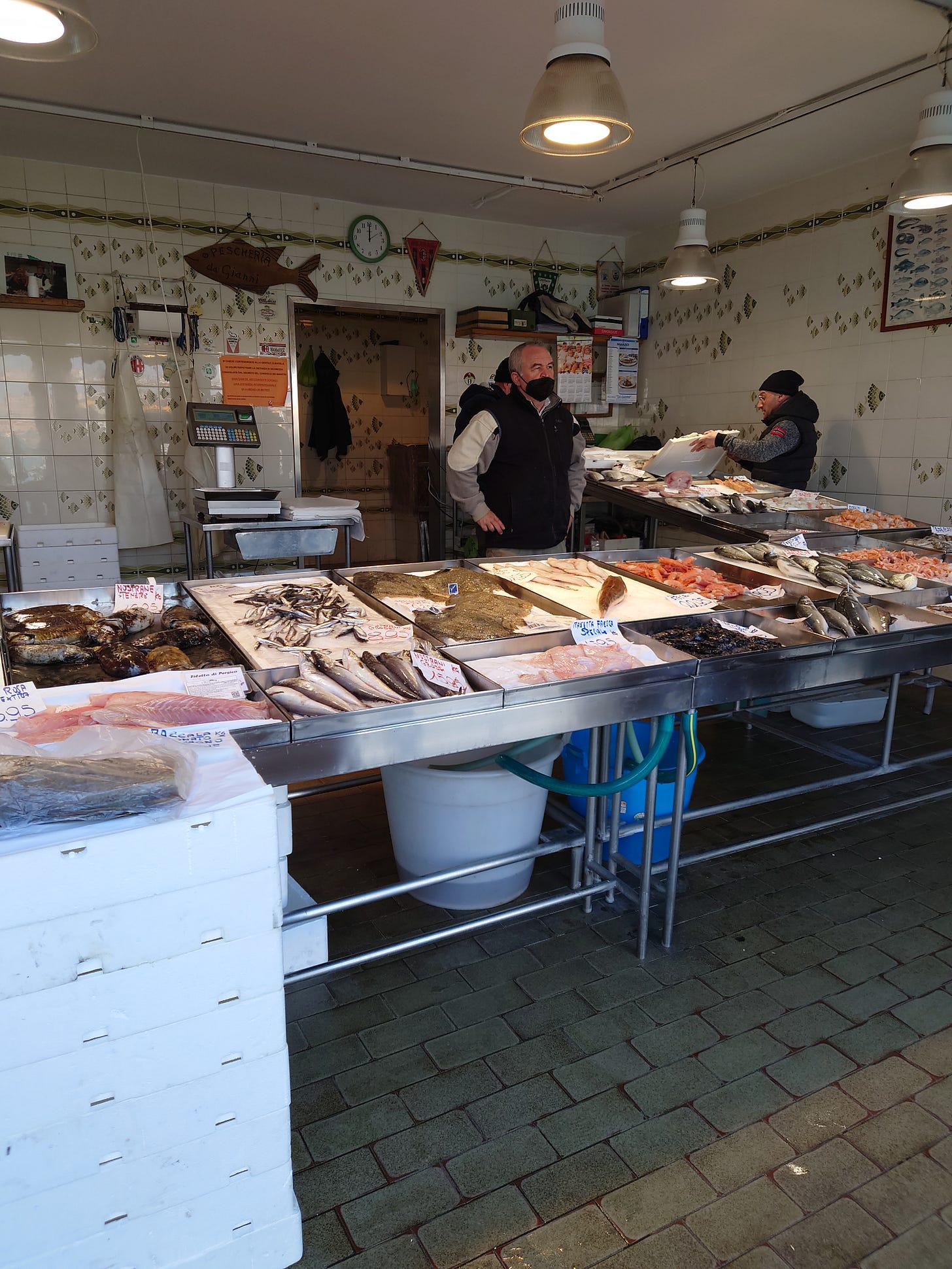
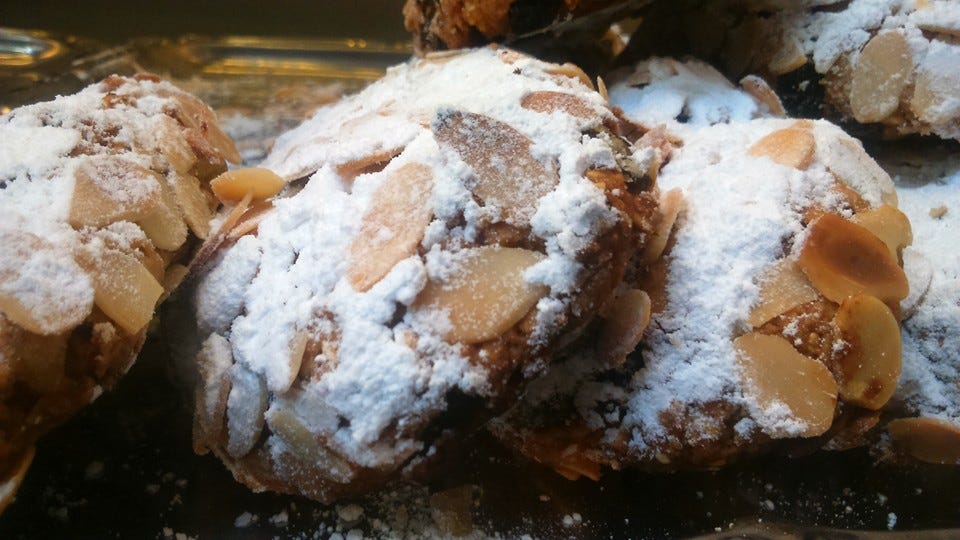
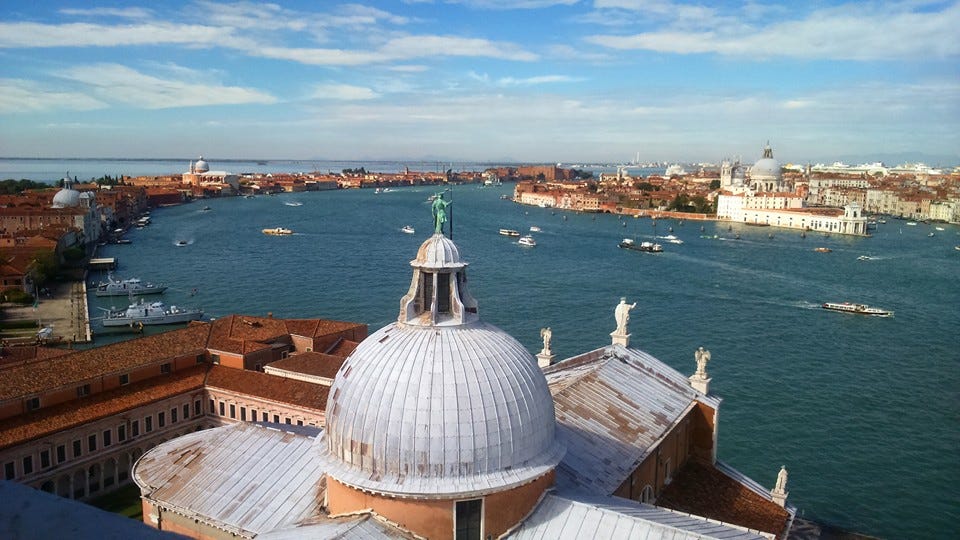
I adore Guidecca (& am scouring the real estate listings on the island) I learned so much! Your descriptions of the market days is going to be so useful.
What a tragedy about your confiscated bay leaves 💔
The Giudecca Island is where I first lived in Venice and it still holds a special place in my heart. There's a quiet and intimacy there that you can hardly find in other spots. And just across the canal the whole world awaits you. Just perfect.
Thank you for this beautiful post Nic!